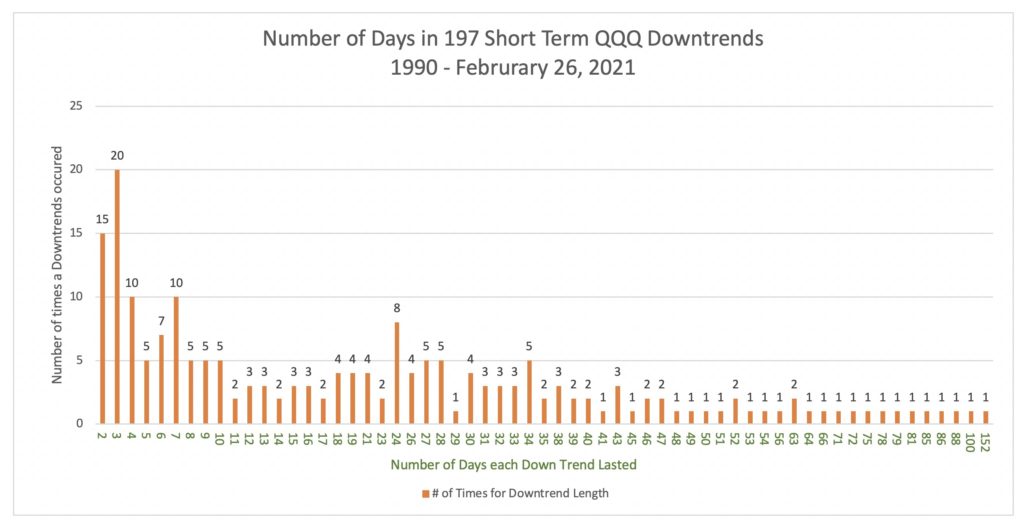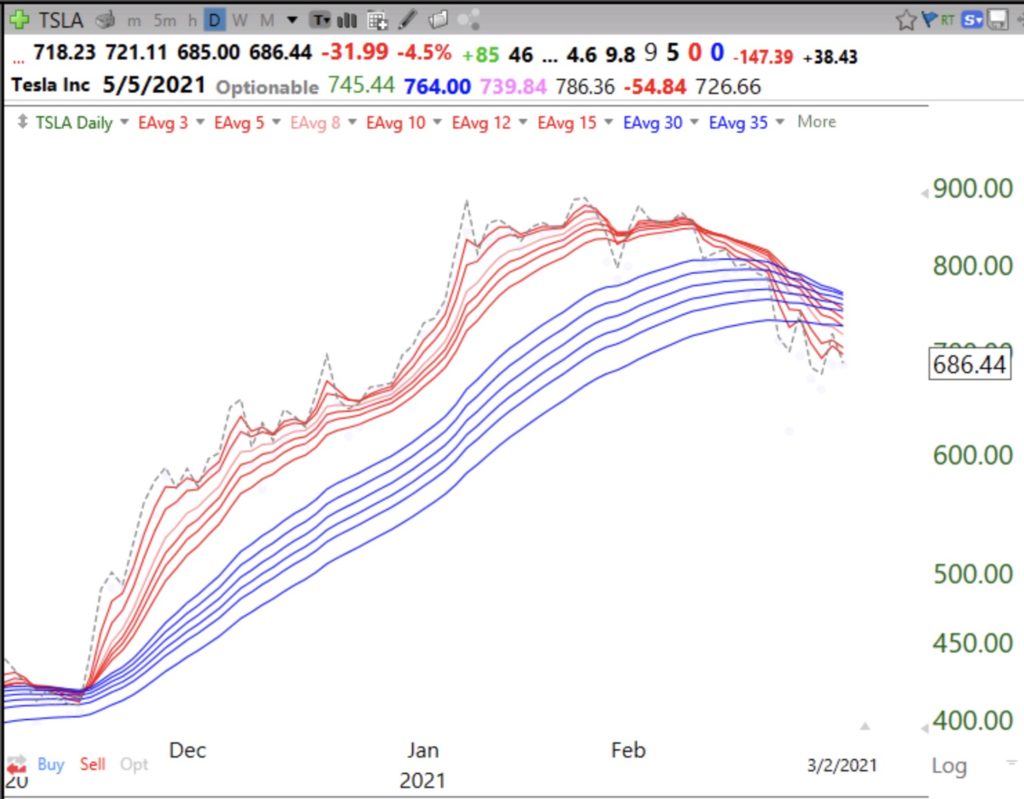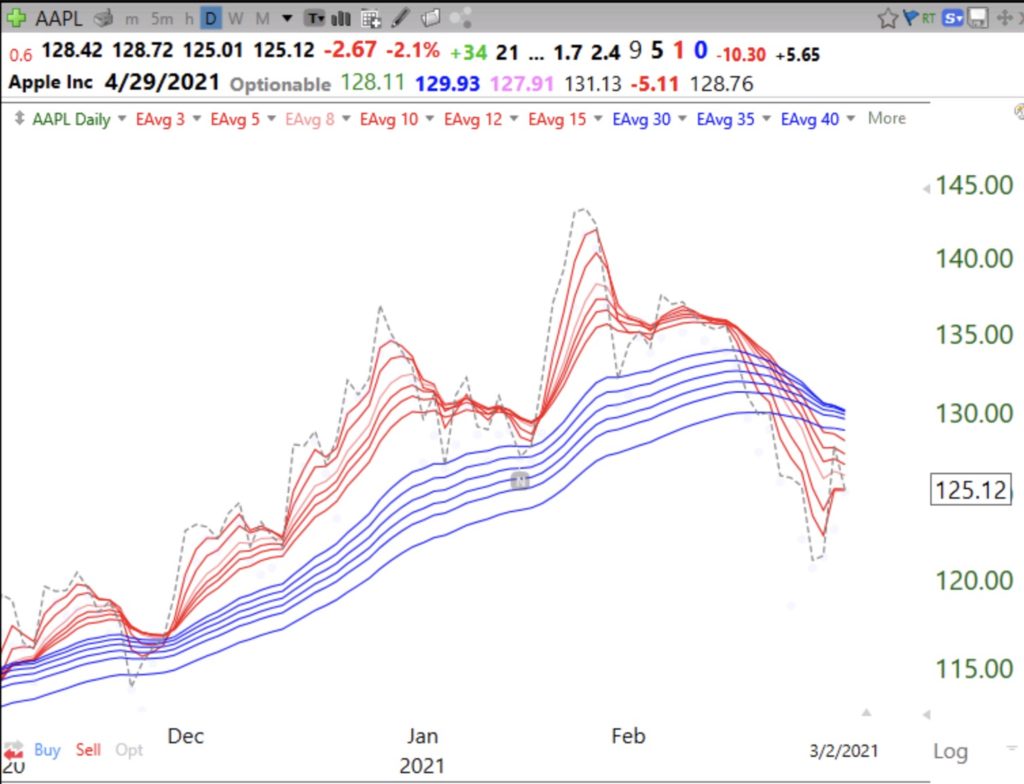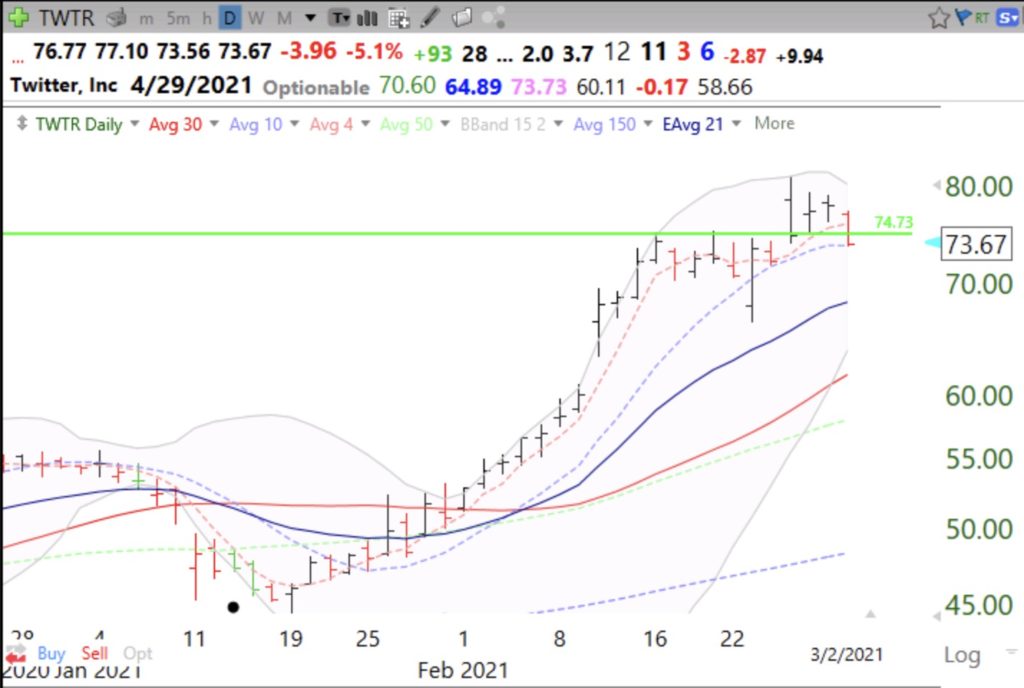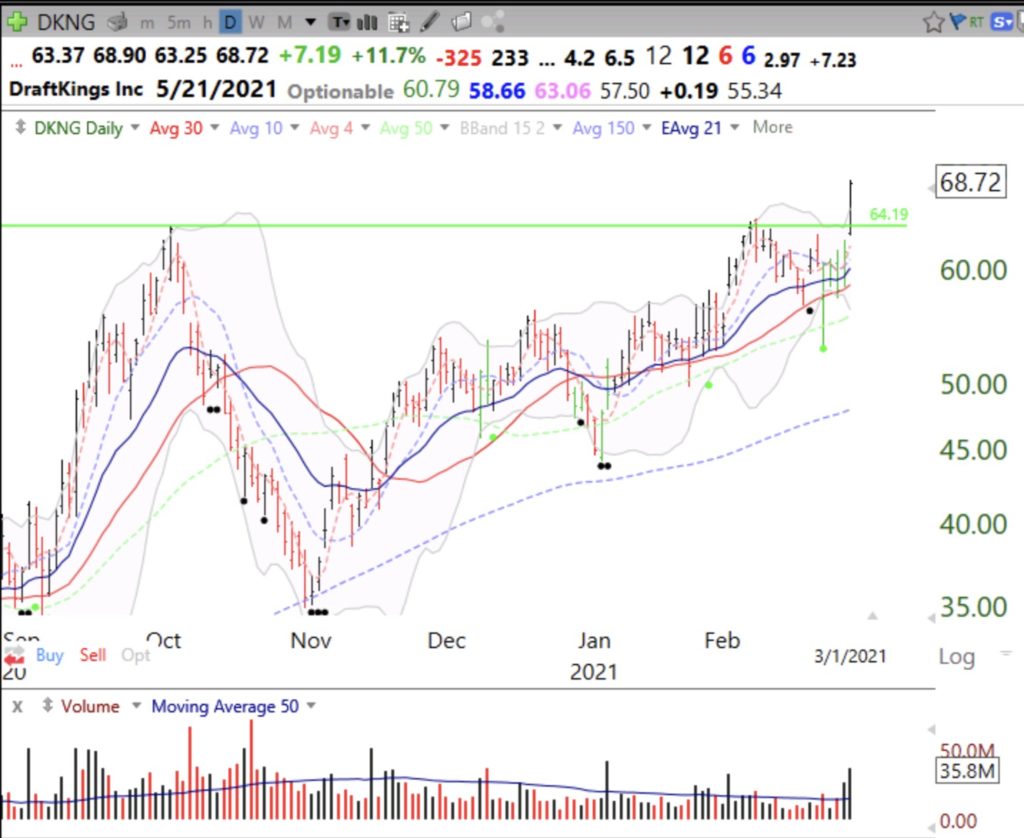Our analysis of the 197 QQQ short term down-trends from 1990 through February, 2021 shows that 25% ended in less than 6 days. 64% lasted 6-49 days and 11% lasted 50 or more days. A QQQ short term down-trend is not the same as a bear market. A short term down-trend may end, followed by a brief up-trend and then a new down-trend. Once the down-trend passes 5 days, I know it can go on for many days and I buy some SQQQ. Below is a chart showing the length of down-trends that have occurred since 1990. The longest down-trend was 152 days. Wednesday was the 7th day of the new QQQ short term down-trend. I have objective rules for calling up and down trends.
